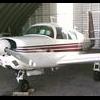Running a tank dry in flight
-
Members Online
- Ragsf15e
- RoundTwo
- ew232
- Joe Linnebur
- redbaron1982
- 0TreeLemur
- MikeOH
- Texas Mooney
- FLYFST
- Missile 300
- jrwilson
- Blaze
- Jim Peace
- TCC
- Scott H
- Nico1
- Tmooney
- Greg Ellis
- WilliamR
- ta2too
- Parker_Woodruff
- BDPetersen
- christaylor302
- Vance Harral
- Amateroy
- Igor_U
- eman1200
- Bolter
- Schinderhannes
- Fly Boomer
- gdwinc
- Shadrach
- Planegary
- Tackleberrt
- A64Pilot
- FJC
- KSMooniac
- mooneyflyfast
- pkellercfii
- Jake@BevanAviation
- Andy95W
- Schllc
- Boston


Recommended Posts
Join the conversation
You can post now and register later. If you have an account, sign in now to post with your account.